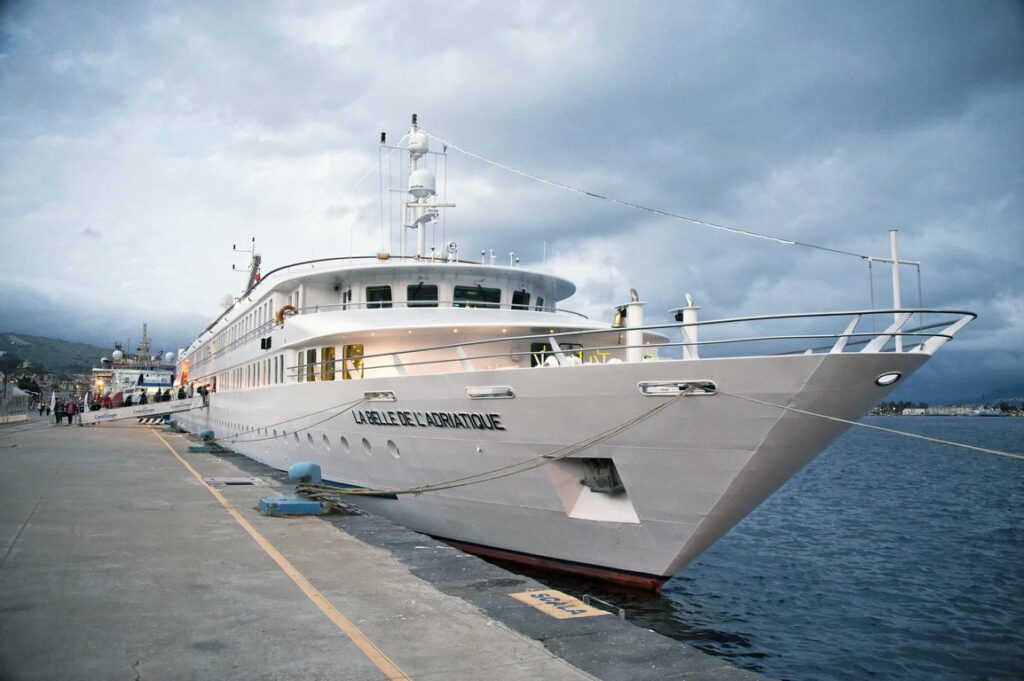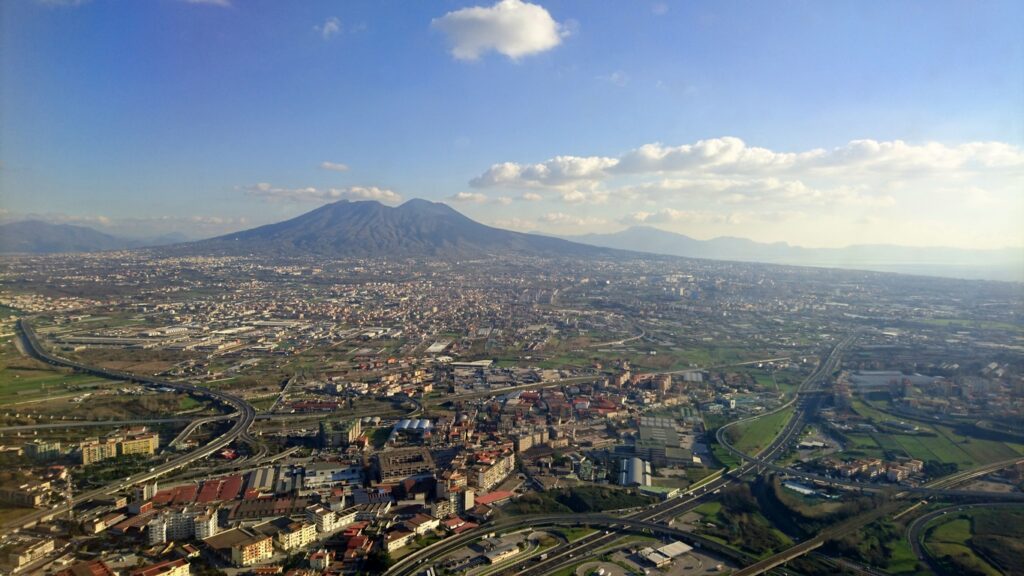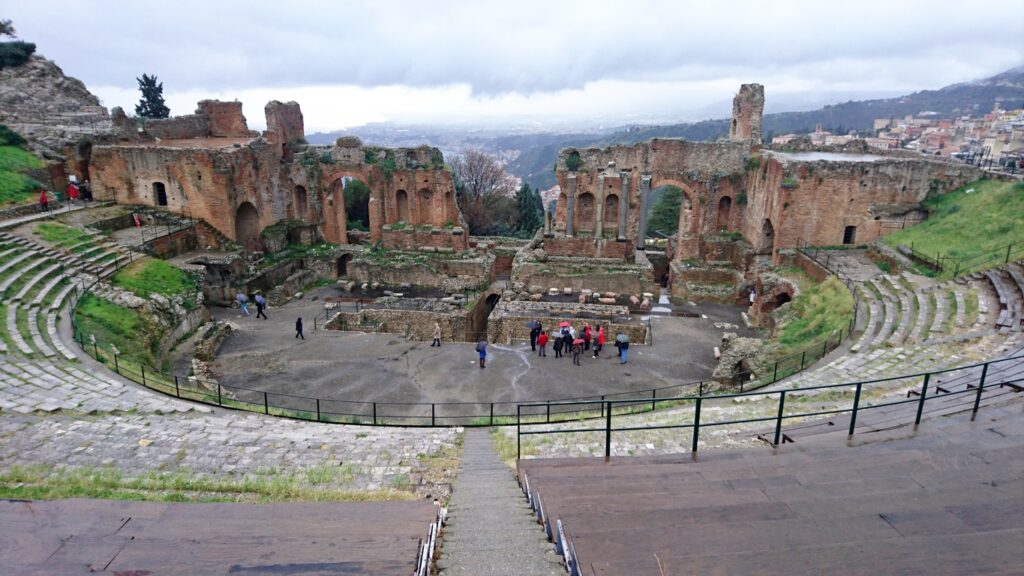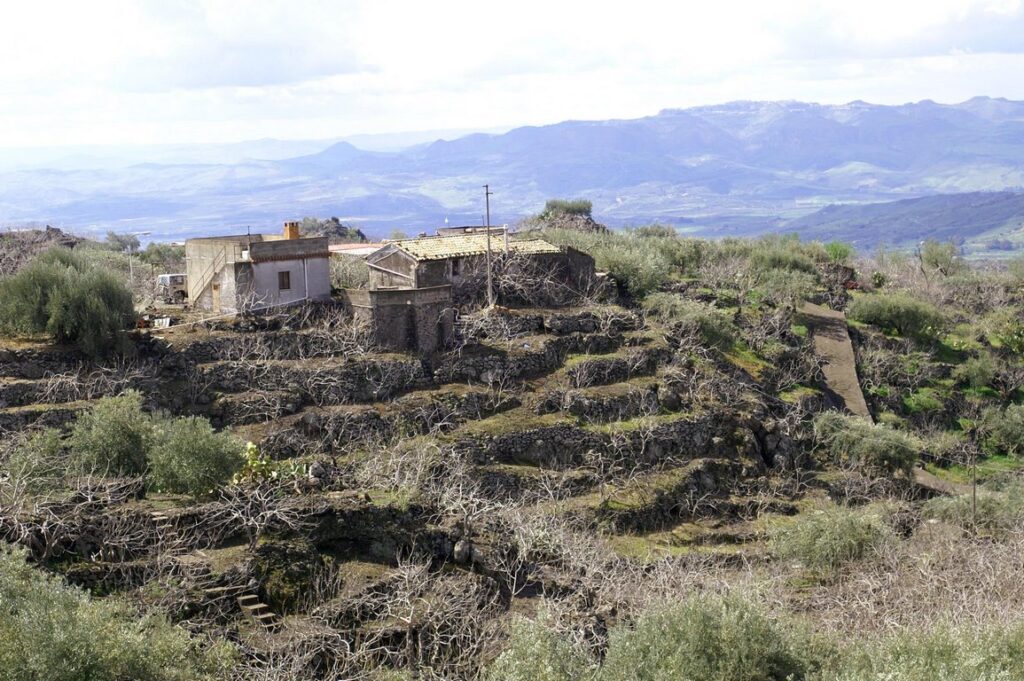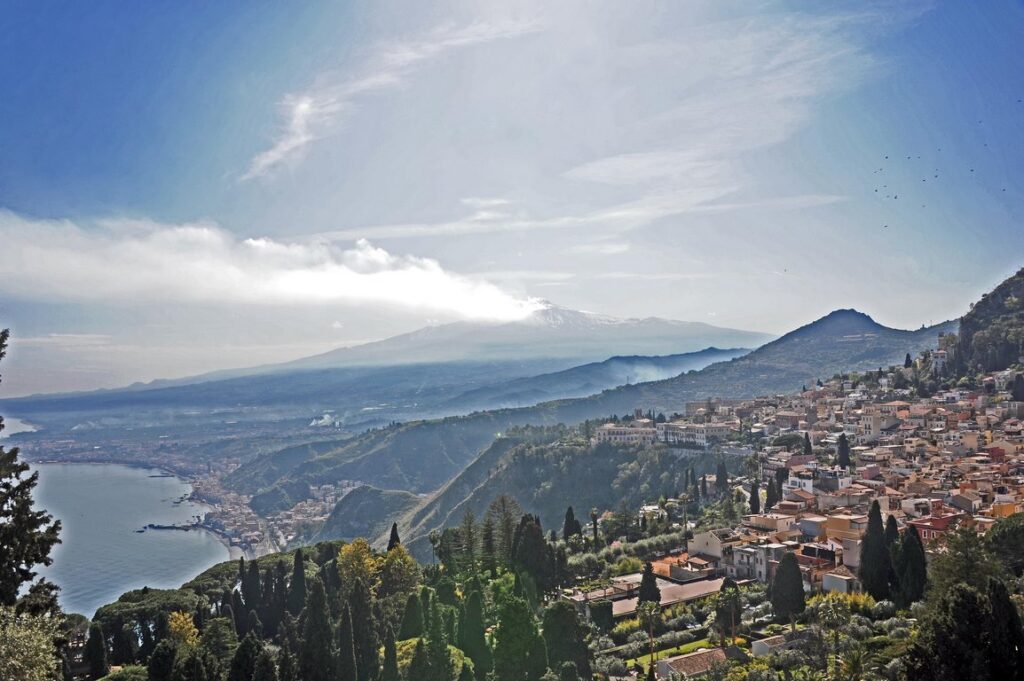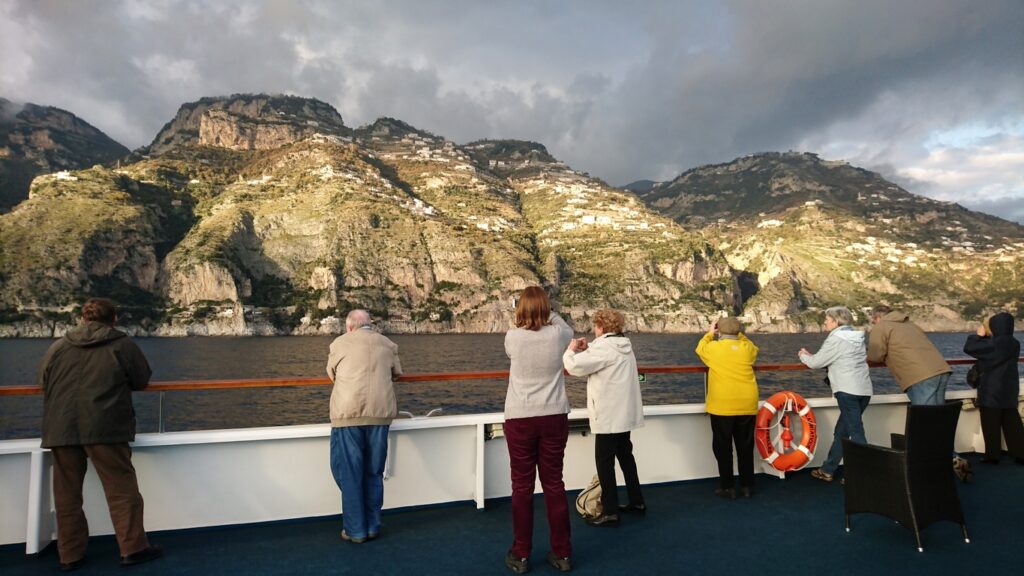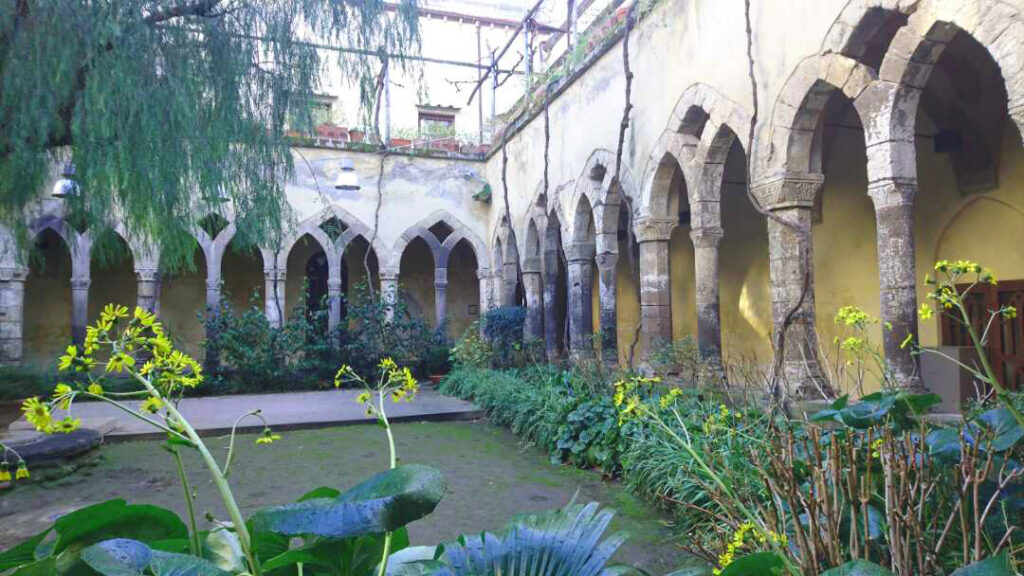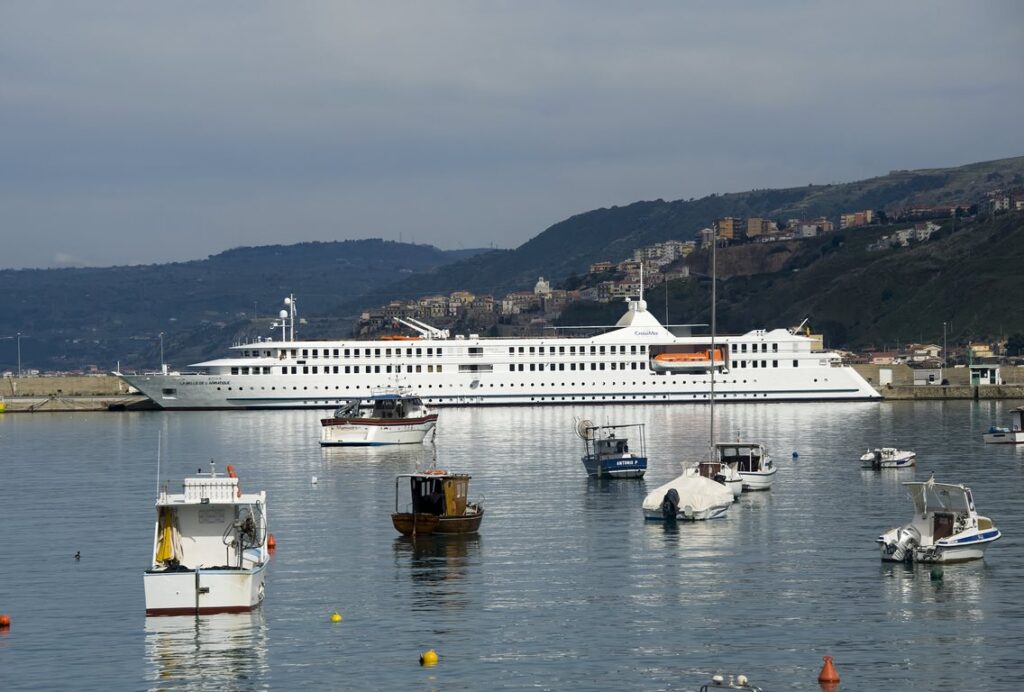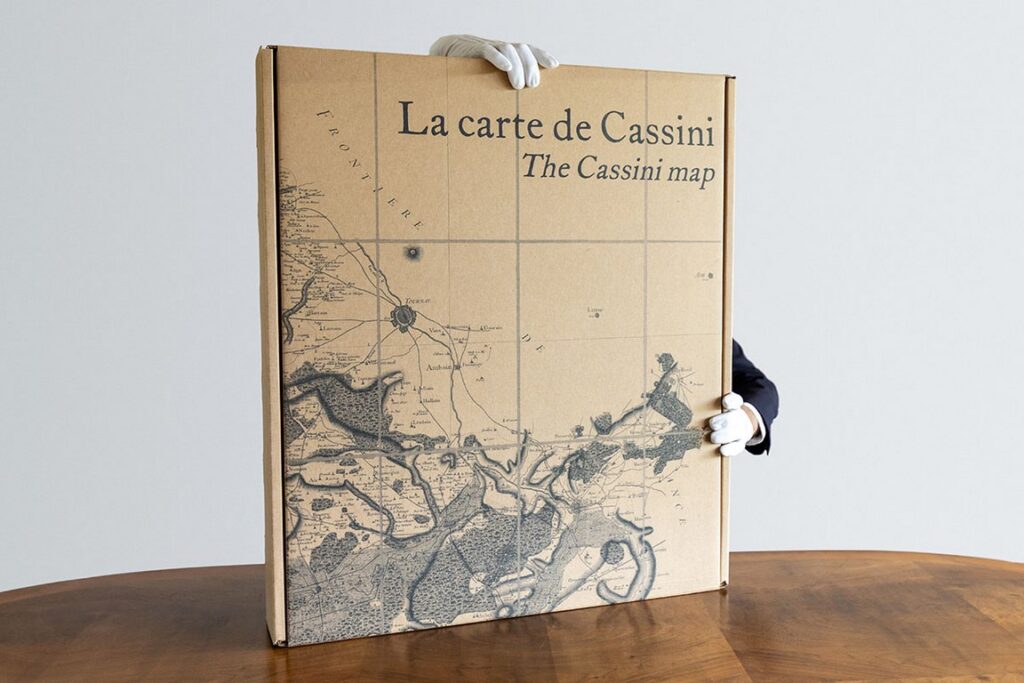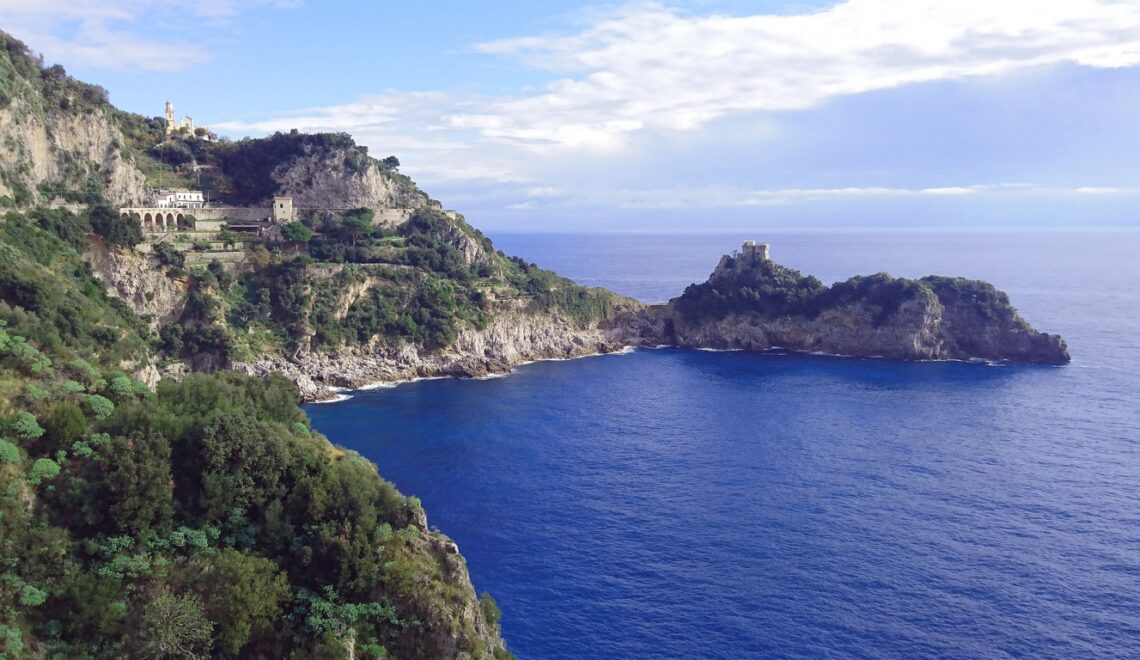
From Naples to Taormina, from Capri to the villages of the Amalfi Coast, this maritime cruise offered by CroisiMer takes us on a voyage of discovery through southern Italy and north-eastern Sicily. An incursion into the spirals of time and landscapes of singular beauty. We are La Belle ?
Bathed in the splendid waters of the Ionian and Tyrrhenian Seas, Southern Italy has something to seduce every lover of the sea and of history. A land of myths since antiquity, sketched out to the rhythm of the jolts of its entrails, southern Italy is a living tableau that exhales a range of scents. The scent of orange and lemon trees clinging to the terraces, floral notes of myrtle and jasmine, winged volutes emanating from the trattorias and the scent of invigorating sea spray colour the dreamlike world of the Mediterranean. An athanor of sulphur, mercury and salt.
Naples, in the shadow of Vesuvius
We join our boat in Naples The Beauty of the Adriatic. Docked on the molo Angioino, opposite the Castel Nuovo, a fortress built in the 13th century during the reign of Charles I of Anjou, our white ship welcomes passengers in 99 cabins. From the deck, you can see the Palazzo Reale, where Murat and his wife Caroline Bonaparte lived, basking in the warm December sunshine. It's time to stroll through the narrow streets of the Spanish Quarter, adorned with linen, to discover the merchants of everything and nothing cluttering up the pavement, to listen to concerts of horns and bel canto, to be amused by the gossip exchanged between gossips from one window to another, to soak up this paradoxical atmosphere where the most sumptuous baroque rubs shoulders with the ravages of time.
Popular with aesthetes and writers since the 17th century, the Campanian city was one of the destinations on the Grand Tour, the long journey that young men from good families were obliged to make. Goethe, Stendhal and Alexandre Dumas celebrated it, as did many lesser-known names. So many civilisations have succeeded one another here and left their mark, as they have throughout the peninsula: Greeks, Romans, Byzantines, Normans, Angevins, Aragonese, not forgetting the Bourbons and the Napoleonic interlude. The city is well worth a visit if you really want to discover all its riches.
Capri, it's not over yet
The next day, after a night in port, we take a hydrofoil to Capri and Anacapri. During the night, the sea swells a little and a light drizzle accompanies the crossing. The magic of the islands: as we arrived at the port, which was rather calm for the time of year, the sky, full of heavy ashen clouds, gradually turned blue. The visit began auspiciously. What can we say about Capri, this island of basalt, ostentation and international tourism? Over the centuries, the "isola" has become a myth. Even in winter, its beauty is very real, and you can't help but be captivated by the charms of this pebble, whose vegetation cascades down its steep slopes into the sea. The "Island of the Wild Boars" of the Greeks was also one of the little corners of paradise for the Romans.
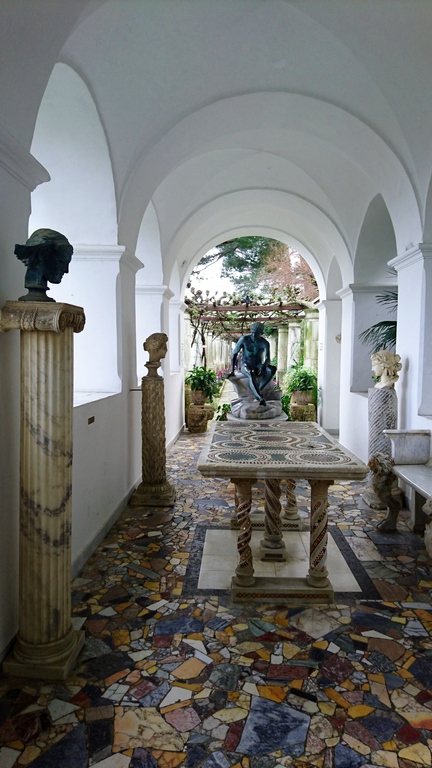
Hailed by the Swedish writer and doctor Axel Munthe, who bequeathed his famous Villa San Michele to his homeland, Capri became a fashionable destination in the 20th century. The oases of luxury and daring architecture dotting the island bear witness to this. Writer Curzio Malaparte's villa, where Jean-Luc Godard filmed Le Mépris with Brigitte Bardot and Michel Piccoli is a good example. Some of the gardens, such as that of Villa Jovis, one of Tiberius' twelve residences, offer marvellous panoramic views of the gulfs of Naples and Salerno and Mount Vesuvius.
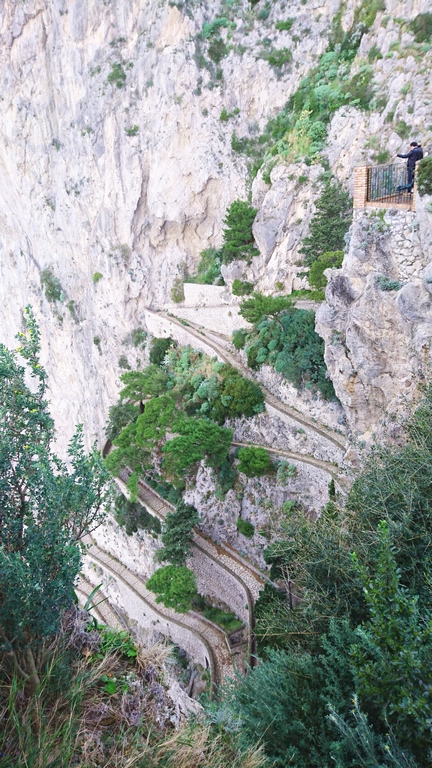
The German industrialist Krupp, who spent his winters in Capri, was irritated by the lack of easy access to his boat moored at the Marina Piccola, so he had a winding road carved out of the rock, the Via Krupp. In Capri, excess is part of the ordinary! A word of advice, however: it's best to avoid staying in Capri in summer, when some 10,000 visitors a day throng the narrow streets to meet the celebrities or to be seen.
At the end of the afternoon, the return journey by hydrofoil promises to be more leisurely. After the obligatory safety drills on board before setting sail, a welcome cocktail awaits us, with a presentation of the crew. A crew of some fifty members who will be looking after passengers throughout the cruise.
Pompeii and Herculaneum: the cry of desolation
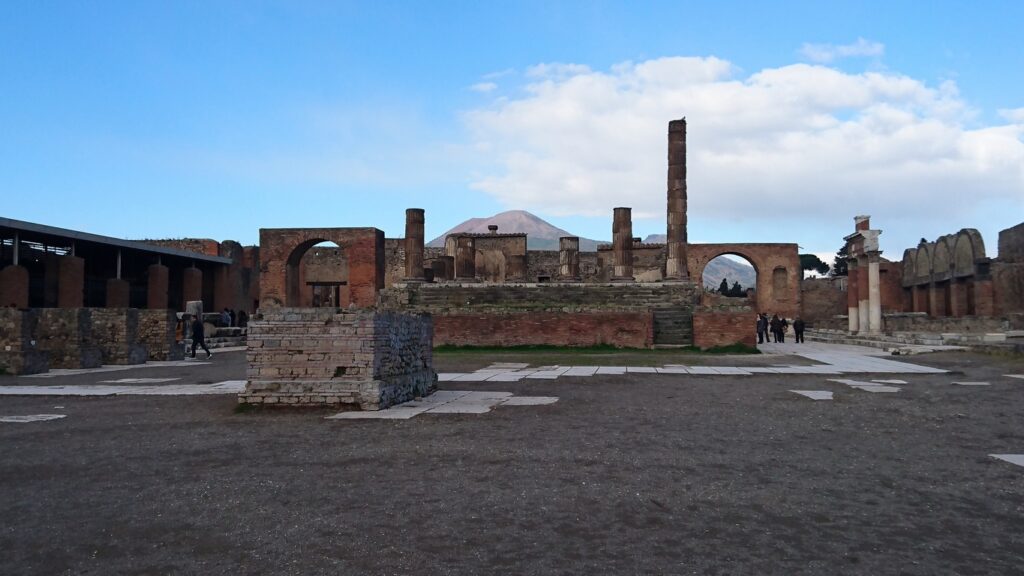
After a second night on the quayside, the Bay of Naples is awakening under a mild winter sun. This is the moment for us to delve into the sources of our civilisation: Pompeii and Herculaneum, cities mummified by the fire of Vesuvius, which towers over the bay. Here, everyone knows that they will wake up one day, but when? While awaiting the wrath of this sleeping monster, the people of Campania live in harmony with the danger (the last eruption dates back to 1944), watching only to see whether the day will be rainy or sunny.
On the slopes of this devil, men have rebuilt, planted; a challenge to the inevitable. But life transcends tragedy! And Naples knows it is immortal. At least, as long as the egg hidden by the poet Virgil under the Castel dell Ovo doesn't break, according to legend (1).
For almost two millennia, since the deadly eruption in 79 AD, Pompeii has lain under a shroud of pumice stone, perfectly preserved in its gangue of ash and dried mud. It was only in the eighteenth century that excavations brought to light this prosperous city, wiped off the map in a matter of hours. We can only be touched by the feverish beauty that emanates from it. Men, women and children were frozen for eternity by the burning ash, dying as they tried to shelter, embrace and breathe in a mouth-to-mouth apocalypse.
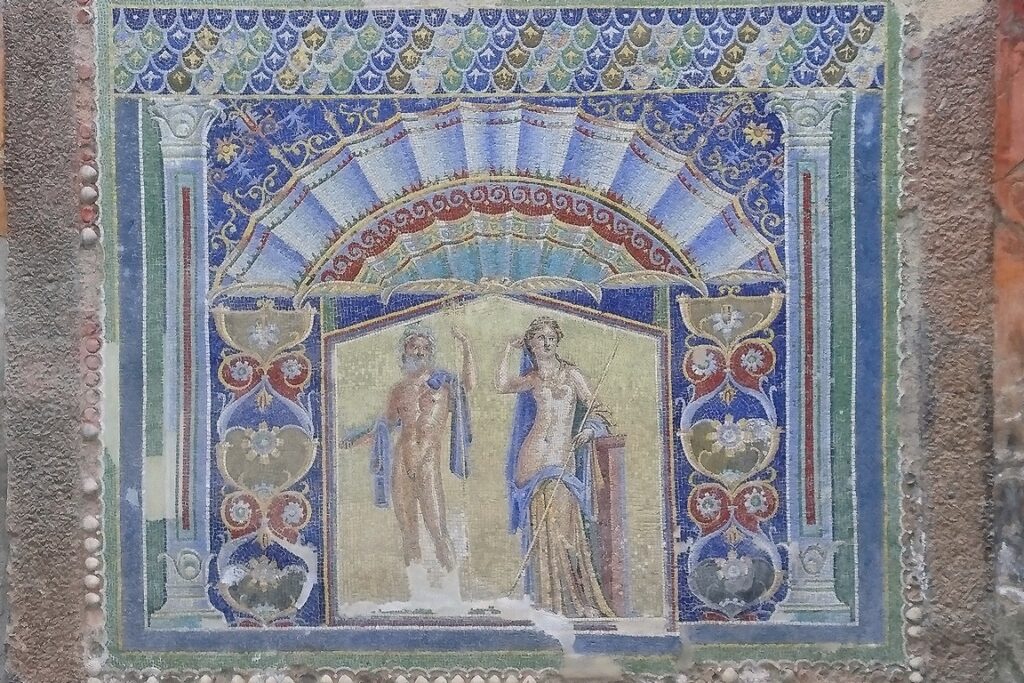
There are still some extraordinary examples of the art of living in mansions from this period, such as the Villa of the Mysteries in Pompeii, with its sumptuously frescoed rooms, and the mansions in Herculaneum, which are better preserved than those in Pompeii.

The afternoon is devoted to a visit to the Solfatara crater in Pozzuoli, some fifteen kilometres from Naples. This is the most active area of a group of volcanoes that make up the Phlegrean Fields, whose name means burning in Greek. The site emits fumaroles of sulphur and has been known since ancient times for the curative properties of its sulphurous waters.
At the end of the day, all the passengers are on deck for our first sail, which will continue through the night in the Tyrrhenian Sea. We listen to the water glide along the hull, the music of the sea, or sip a drink at the bar as we watch this mythical bay, one of the most beautiful in the world, drift away.
In the Mediterranean, sailors know that the weather can be fickle. So everyone is at their post on La Belle. "In winter, we can have gales, but nothing major, sometimes a few downpours that don't last long,, explains the commander. In spring and autumn, brief thunderstorms accompanied by stronger winds can occur. But we have to be vigilant because these waters are very busy with all kinds of boats." Fortunately, the sea didn't give us any trouble that night and we docked in the morning at Vibo Marina for an excursion to the small medieval town of Vibo Valentia and a visit to the town's archaeological museum.
Let's go to Messina and Taormina
The late afternoon of this fourth day continues with a sail to Messina. Maritime traffic is intense in this strait as Italy develops more and more "motorways of the sea" to transport goods. But with our boat equipped with the latest generation of radars, we are safe.
After a night in port, it's time to take a closer look at Europe's largest active volcano: Mount Etna. In the 20th century, it erupted 80 times! Its ceaseless activity is constantly altering its height, which now stands at 3,350 m. Our programme is slightly disrupted by the snow, which has started to fall heavily, not surprisingly at the beginning of January. It was impossible to reach the famous Silvestri crater and its lunar landscape on foot. Fortunately, the gods are with us, and while we enjoy a cappuccino, we have a chance to admire the snow-covered flanks of this volcano, which last erupted in a major way in May 2016.
Facing Mount Etna, Taormina is a small medieval town perched on a terrace overlooking the sea. This little paradise of style and elegance stretches along the slopes of Mount Tauro, at an altitude of 200 m, under a canopy of luxuriant almond, lemon and bougainvillea trees. It was founded in 358 BC by inhabitants fleeing Naxos, which had been destroyed by the tyrant Denis. Guy de Maupassant, who visited the island in 1885, declared: "This village is a picture, but a picture in which we find everything that seems to exist on earth to seduce the eyes, the mind and the imagination."
From the ancient Greek theatre, remodelled by the Romans, to Corso Umberto, the shopping avenue that crosses the city, visitors will be delighted by the succession of influences. Over the centuries, the city has been enriched by palaces, churches and houses that will delight lovers of old stone. The Greek theatre, which is said to have left Goethe speechless, offers magnificent views of Mount Etna and the sea.

Tindari and its Black Madonna
That evening, we set sail for Milazzo, some 25 nautical miles from Messina. This ancient Greek town is the starting point for a visit to Tindari, the sanctuary of the Black Madonna. Perched on a promontory 270 metres above sea level and visible from a great distance, this is a popular place of pilgrimage. The church houses a statue of the Black Madonna, originally from Byzantium, made from Lebanese cedar and enclosed in a richly decorated shrine.
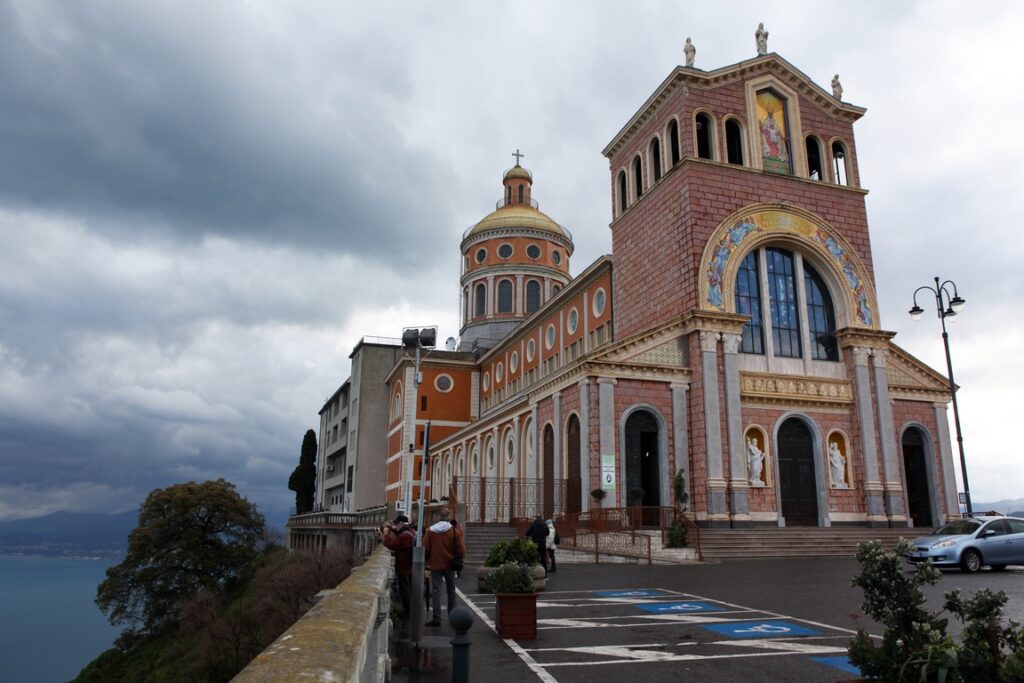
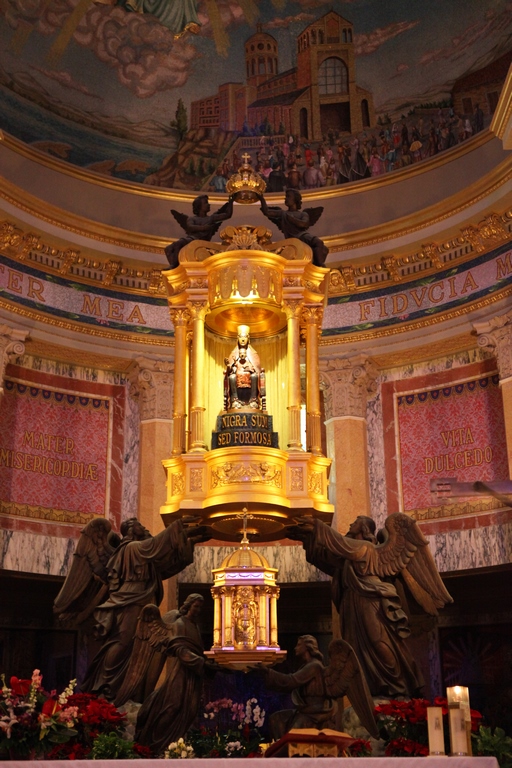
From the belvedere, the view takes in the Tyrrhenian Sea, the Aeolian Islands and the Sicilian coast. Back on board, the boat heads for Salerno, which we will reach during the night.
Aeolian Islands and Amalfi Coast
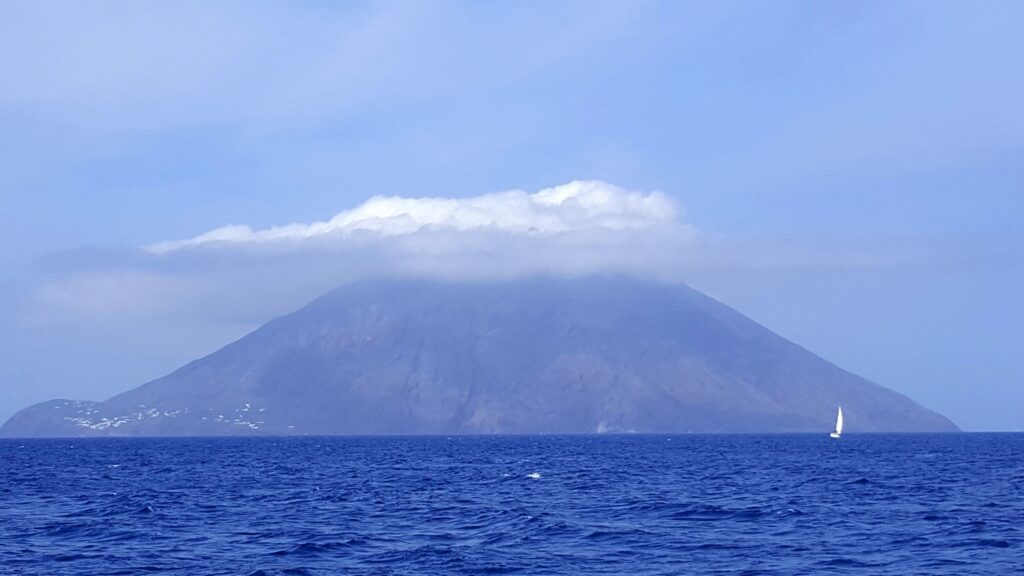
Stromboli appears in the late afternoon. Passengers were on deck, or in the panoramic lounge for those who were a little chilly, to watch a few sprays of molten lava gush out of its crater. Alas, Vulcan is lazy and will only release blackish smoke and a brief red spit. Although the 17 Aeolian Islands (only seven are inhabited) are all volcanic in origin, only Stromboli and Vulcano still have an active volcano. Stromboli is home to two villages accessible by boat, which are invaded in spring.
The following day is entirely devoted to the Amalfi Coast, which we will explore on the garden side by bus and on the sea side by boat. Its unique landscape, with its steep slopes and villages perched on the slopes of the Lattari mountains, its cliffs and lush vegetation, was declared a UNESCO World Heritage Site in 1997. This majestic coastline, with its enchanting way of life, off which Capri nestles, is perhaps the most beautiful in the Mediterranean.
The bus takes us to Sorrento, a pretty, quiet town at this time of year. The town is famous for being the capital of the famous lemon liqueur, limoncello, which we were delighted to taste.
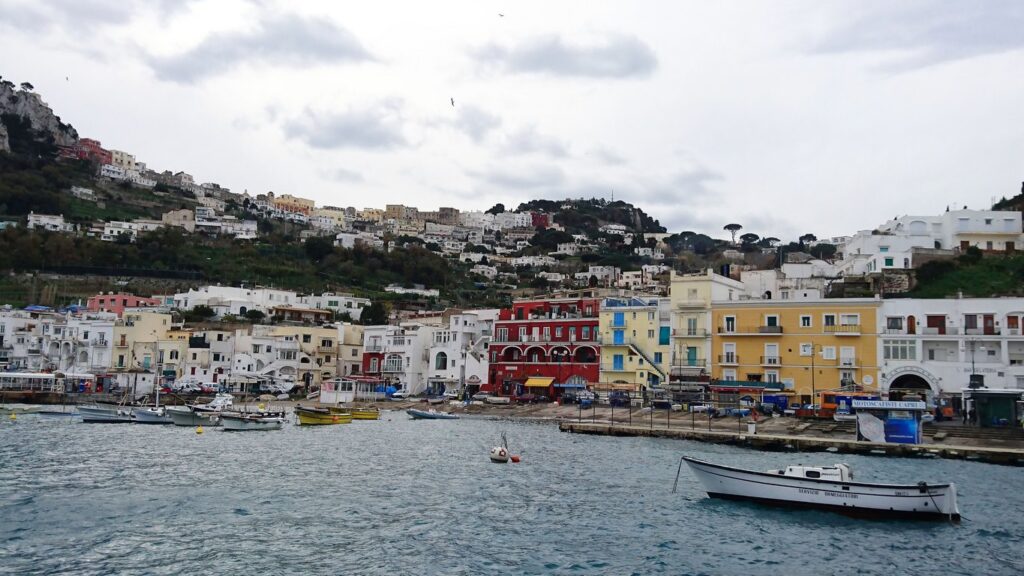
Positano is the chicest village on the coast, a haven for wealthy Americans and celebrities. Its success is not misplaced. Clinging to the cliffs, its steep streets form a patchwork of colourful little houses. The same goes for Ravello and Amalfi, the namesake of this magnificent coastline. From viewpoint to viewpoint, our eyes never cease to wonder!
But we have to leave, with the desire deep down to come back and spend more time in these picture-postcard villages. We take one last stroll through the colourful stalls to bring home a little of this region. A few preserved lemons, colourful ceramics, limoncello that's a little too yellow to be natural, and spices for spaghetti... "aglio, olio e peperoncini.
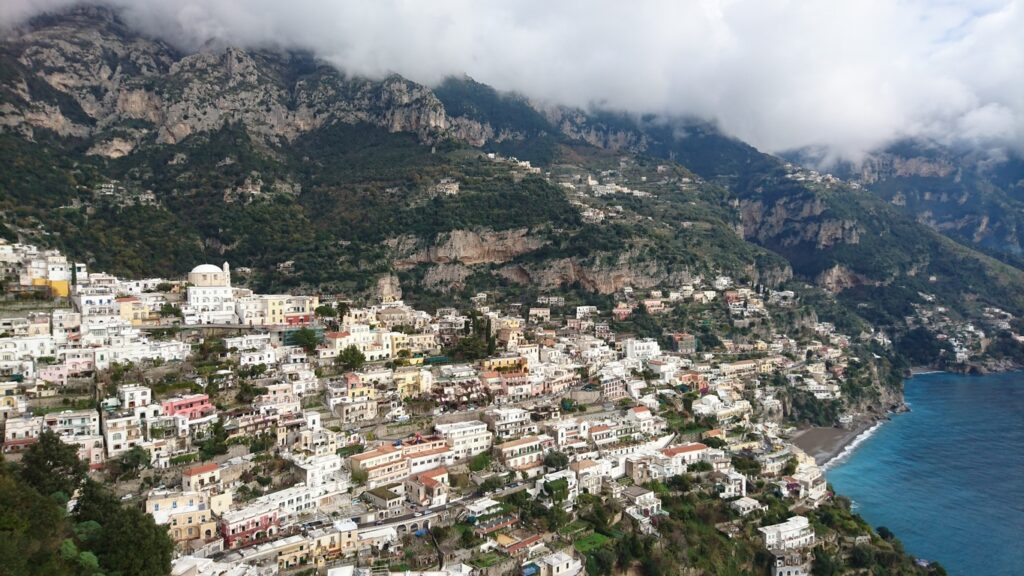
As if in a farewell bow, La Belle follows this mythical coastline one last time before reaching Naples, our final destination. The multicoloured fishing villages on the cliffs turn red as the sun sets. The steep rocks on which the waves break into white foam plunge into intensely blue water. As we drift off into the night, it's already time to reminisce.
(1) The poet Virgil, who wanted to play a joke on the Neapolitans, had hidden in the castle a "Magic egg" a golden egg with the power to defend the town from any disaster. Most of the town's inhabitants believed this to such an extent that in 1343, when a storm hit the castle, rumours that the egg had broken caused panic in the town, forcing Joan of Anjou to place a second egg inside and solemnly declare that the egg had been replaced and its magical powers restored.
The Belle of the Adriatic
The Beauty of the Adriatic is the 26th cruise ship of the Strasbourg-based company CroisiMer and the first seagoing vessel in its fleet. It is a 4-deck boat that can accommodate 198 passengers (Length: 110 meters, Width: 12.80 meters, Tonnage: 3500 tons). It was built by the Meuse et Sambre shipyard and commissioned in 2007. The hull and 2 lower decks were built in Namur, and the ship was then towed to Brussels via a canal, where the other 2 decks were completed. This was due to the height of the railway bridges, roads, etc., as a 4-deck ship could not pass under them.
La belle de l'Adriatique has been fitted with 'FINS' type lateral stabilisers to keep the vessel stable in swell conditions. The boat is also equipped with lifeboats that can accommodate all the passengers and crew. With a fairly shallow draught of 2.50 m, the boat is a real pleasure to sail, La Belle can navigate in areas not accessible to large cruise ships and dock in small ports.
Text and Photos : Brigitte Postel
https://www.croisieurope.com/croisiere/naples-cote-amalfitaine-sicile-calabre-classique

